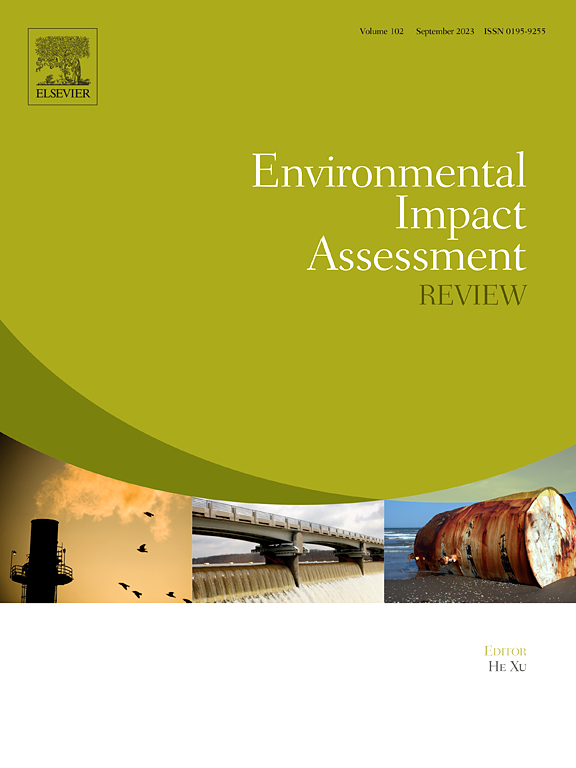为韩国生产的杀菌剂开发区域环境风险评估模型
IF 9.8
1区 社会学
Q1 ENVIRONMENTAL STUDIES
引用次数: 0
摘要
2011年,韩国的加湿器消毒剂导致1533人死亡。为了防止此类事故的发生,韩国政府于2019年实施了《消费者化学产品及杀菌剂安全管理法》,引入了杀菌剂物质和产品的审批制度。该法律建立了基于接触这些物质和产品的环境风险评估。我们对韩国11个城市进行了环境风险评估,以确定杀菌剂生产过程中可能对周边地区造成的风险程度。在我们的研究中,我们根据污水处理厂(STP)、淡水、沉积物和陆生隔间中杀菌剂(如2-丙醇、氧化锌、氧化钙、吡虫啉、次氯酸钠和过氧乙酸)的每种微生物的毒性值,得出了预测的无效应浓度(PNEC)。根据11家生产厂的排放情况,计算了6种杀菌剂的预测环境浓度。地表水中2-丙醇的局部PECs高达1000 mg/L,氧化锌和氧化钙的PECs为3-90 mg/L,而地表水中2-丙醇的区域PECs低至0.03 mg/L。6种物质的危害商(HQ)显示,2-丙醇、氧化锌、氧化钙和过氧乙酸超过了一级STP的危害。然而,我们发现二级没有风险,二级考虑了实际物质的特性及其在下水道系统中的行为。我们开发了一个模型,通过预测在生物杀灭剂生产过程中可能发生的排放和PECs来反映每种环境介质的区域特征。该模型为杀菌剂的环境风险分级评价和控制提供了有价值的工具。本文章由计算机程序翻译,如有差异,请以英文原文为准。

Developing a regional environmental risk assessment model for biocides manufactured in South Korea
The Humidifier Disinfectant Case in South Korea caused 1533 deaths in 2011. To prevent such accidents, the South Korean government implemented the Consumer Chemical Products and Biocides Safety Control Act in 2019, introducing an approval system for biocidal substances and products. The law established an environmental risk assessment based on exposure to these substances and products. We conducted an environmental risk assessment for 11 cities in South Korea to determine the degree of risk to the surrounding area that may occur during biocidal substance manufacturing. In our research, we derived predicted no-effect concentrations (PNEC) based on toxicity values for each organism for microorganisms in sewage treatment plants (STP), freshwater, sediment, and terrestrial compartments for the biocides such as 2-propanol, zinc oxide, calcium oxide, imidacloprid, sodium hypochlorite, and peracetic acid. The predicted environmental concentrations (PEC) of the six biocides were calculated based on the discharge from 11 manufacturing facilities. Local PECs were as high as 1000 mg/L for 2-propanol in STP and 3–90 mg/L for zinc oxide and calcium oxide in STP, while regional PECs were as low as 0.03 mg/L for 2-propanol in surface water. The hazard quotient (HQ) for the six substances shows that 2-propanol, zinc oxide, calcium oxide, and peracetic acid exceed the hazard at STP in Tier 1. However, we found no risk in Tier 2, which considers the characteristics of the actual substances and their behavior in the sewer system. We developed a model that reflects the regional characteristics of each environmental medium through predicted emissions and PECs that may occur during the manufacture of biocidal substances. The model provides a valuable tool for tiered evaluation and control for environmental risk assessment of biocidal substances.
求助全文
通过发布文献求助,成功后即可免费获取论文全文。
去求助
来源期刊

Environmental Impact Assessment Review
ENVIRONMENTAL STUDIES-
CiteScore
12.60
自引率
10.10%
发文量
200
审稿时长
33 days
期刊介绍:
Environmental Impact Assessment Review is an interdisciplinary journal that serves a global audience of practitioners, policymakers, and academics involved in assessing the environmental impact of policies, projects, processes, and products. The journal focuses on innovative theory and practice in environmental impact assessment (EIA). Papers are expected to present innovative ideas, be topical, and coherent. The journal emphasizes concepts, methods, techniques, approaches, and systems related to EIA theory and practice.
 求助内容:
求助内容: 应助结果提醒方式:
应助结果提醒方式:


